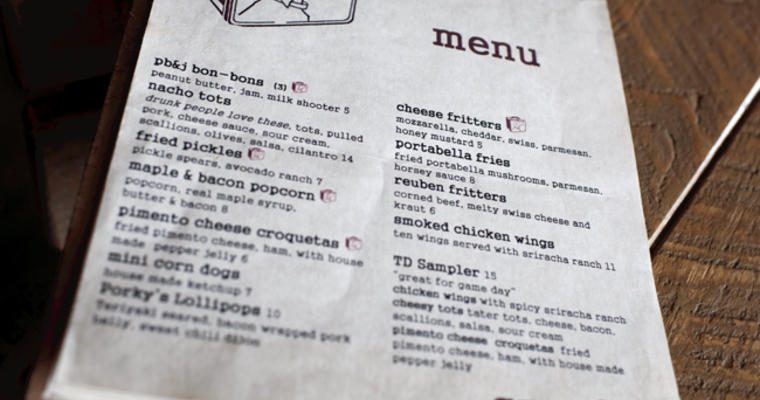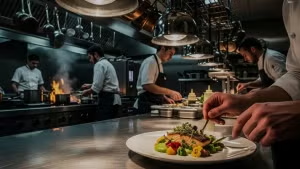Setting menu prices can be daunting. Restaurateurs must balance uniqueness of their menu with consumer expectation, competitive comparisons, and food and operational costs.
“Determining profitable selling prices in restaurants is a science and an art,” says Paul Sorgule, MS, AAC, founder and former Dean of the Culinary Arts Program at Paul Smith’s College in Paul Smiths, New York. “From a strictly mathematical approach, the process is straightforward.”
But “soft” considerations bring in the artful side of pricing, Sorgule maintains. Those factors include tradition, competition, and what the market will bear. Finding the balance among hard numbers, research, and intuition serves up the sweet spot in pricing a successful menu.
Here’s how:
1. Determine the food cost
“The menu has to be profitable,” says Gordon Food Service Commercial Segment Marketing Leader Bob Koch. “Exercise analytics and run a menu mix of high profit and favorite items.”
First, cost out the menu. “You can’t arrive at pricing until you know what the plate costs,” he says. “Be surgically precise—right down to the lemon wedge.”
Gordon Food Service Commercial Segment Marketing Specialist Robert McMillion suggests a front-load recipe manager to help determine and track margins and costs. “It takes a while to load, but once you do that initial groundwork, it’s worth it,” he says.
Be sure to conduct ongoing incognito portion-control audits. “Deconstruct the sandwich, weigh each component. Plating and portioning might have shifted since you first put it on the menu.” If part of the recipe build comes back to the kitchen untouched, consider removing it. If it’s moving really well, see that as an opportunity to the raise the price.
The mathematical approach, Sorgule says, is straightforward: Plate cost divided by food-cost percentage equals selling price. However, other factors affect pricing strategies. Yield versus trim is one factor. “Conduct frequent yield tests to determine actual useable product and ‘real’ costs,” Sorgule says.
Another factor is market fluctuation, driven by the volatility of wholesale costs. “An effective selling strategy dictates that you build in a cushion when establishing price,” Sorgule says, noting that training is crucial. “All this effort is wasted unless there is a system in place for accurate portioning and all cooks are trained to follow that system.”
So the selling price becomes recipe cost + make-up cost + marketing fluctuation, divided by food-cost percentage.
2. Survey the competitive landscape
Start with local independents, Koch suggests. “Who is your competition here?”
He suggests a close look at chains. “You can learn things from chains,” he explains. “Don’t mimic their pricing, but studying them will tell you what the market is doing.”
Chains invest in deep market research and consumer insight data. “Take advantage of that,” he adds.
Competitive analysis has grown in sophistication in this digital age. “Search the Web for menus in your ZIP code,” McMillion says.
As an example, he cites helping a customer specializing in barbecue price a pulled-pork sandwich. “We searched for barbecue menus in his area and did comparative analysis,” he says. “We moved the pricing up by $1 because of that study. Every dollar counts.”
3. Key into value perception
Many diners measure value differently at independents and chains. Uniqueness, craftsmanship, and quality all trump value pricing in this space.
“You can’t be all things to all people, and you can’t cave to competitors with lower prices,” Koch says. “Operators have to embrace that what they do, they do really well. They have to be courageous and disciplined enough to charge for it.”
Special touches help pump up perceived value—from menu cues like hand-crafted, pickled, hand-cut, small-batch and housemade to premium ingredients like caramelized onion or local goat cheese.
“These details not only give you points of difference but also allow you to charge more,” McMillion says. “But it’s important to understand how your guests perceive your operation.”
4. List menu prices effectively
Strategic menu design helps draw the eye to your menu’s superstars and workhorses. It can even help sell the puzzles, those dishes that offer high margin potential but just aren’t selling well. Place dishes you want to move almost in the centre of a two-page menu, or toward the upper right quadrant.
Take care with displaying prices on the menu. “Use language to add value before people look at the price, and make sure the price is printed in subtle fashion on the menu so the server has a chance to pitch how great the item is before guests turns off their desire.”
McMillion advises against single-digit pricing.
“Data shows customers don’t round up; they round down,” he says. “You might like how $9 looks on the menu, but $9.95 reads the same to the customer. We call that couch-cushion change, and you don’t want to throw that away.”











